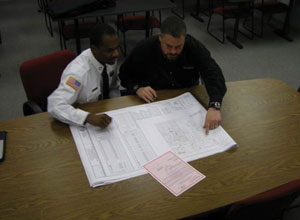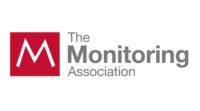
|
|
UL auditors have worked closely with the AHJ community for almost 100 years. PHOTO COURTESY OF UL |
Having a UL listed central station is a mark of distinction pursued by alarm monitoring companies and trusted by consumers. But earning the distinction can be a lengthy and intricate process that requires demonstrating a range of competencies followed by ongoing inspections to maintain the certification. Although there are now several organizations that are involved on the audit side of the business, Underwriters Laboratories was the first with its audit program developed in the 1920s. The first UL standard for central stations was introduced in the late 1920s.
Underwriters Laboratories or UL is a fully recognized Nationally Recognized Testing Laboratory (NRTL) that provides consensus-based standards. In the case of security systems and monitoring, most UL standards are created under American National Standards Institute (ANSI) guidelines before issuance.
Senior Staff Engineering Associate at UL, Peter Tallman, has been involved with UL alarm certificate development since 1972, serving as principal engineer in crafting many of the relevant alarm industry standards. He offers insight into the complex UL listings.
According to Tallman, the basis of a UL listing for a central station means it and the services it provides have been evaluated for compliance with the applicable UL standards. In the case of central station alarm monitoring those standards would be UL 827 and in most cases UL 1981, as well. Additionally, some central stations choose to be evaluated to provide monitoring services to national industrial systems in compliance with UL 2050. At the highest level, UL 2050 meets or exceeds U.S. Department of Defense (DOD) requirements. (See “More About UL 2050 on page 111.)
“The standards are interconnected to create a three-dimensional central station,” Tallman describes. “If we look at UL 827 it covers the basic building. If there is automation at the center, it is covered under UL 1981. In a central station where there are receivers that signals come into, then there are equipment standards under UL 864 (fire alarm equipment) and 1610 (burglar alarm equipment) that relate to construction and the performance of those receivers. So a central station that is complying with 827 would have to install receivers that comply with 1610 and 864,” Tallman explains.
Categories related to standards are created when UL perceives a particular product activity that needs to be described with its own set of criteria. So the central station fire alarm category was created because the national fire alarm code (NFPA 72) describes central station and non-central station service but does not spell out requirements for the building or the many nuances contained within. Instead, it points to UL 827 as the standard to follow.
“Within 827 there are three types of central station listings that are based in that standard. Spelled out are fundamental requirements for plant and equipment along with a section for each product category. There is one category for central station protective signaling services also referred to as central station fire alarm; a second for central station burglar alarm services; and a third category for residential monitoring stations,” Tallman describes.
Then, the equipment starts having performance requirements based on product standards. Requirements for the control units, transmitters and signals require compliance with UL 864.
Tallman recommends the first step for any company considering pursuing UL certification is to determine which Agency Having Jurisdiction (AHJ) requires your central station to be listed and what specific market you are trying to serve. “UL is committed to helping provide confidence that a company has selected the right category that aligns with their particular business. We don’t set out to teach the requirements or guide a company through designing a center that meets the standard, but we can provide the resources for them to do it,” he says.
One tool Tallman recommends is using the UL website www.ul.com to obtain specific information on each standard and requirement. Each category has a category code associated with it and a guide card listed under the Certifications tab spelling out each individual standard. Some of the categories and their UL codes are:
• Central Station Fire Alarms is UUFX
• Central Station Burglar Alarm is CPVX
• Monitoring Station Residential is CVSU
UL Certification is intended to enhance a security business by giving it the means to deliver security services and have a credential behind it. “It’s important for companies to understand that the certificate categories are designed around complementing someone’s business and perhaps providing a credential for a particular area of the alarm business to benefit the customer and satisfy an AHJ requirement,” Tallman adds.
In the category for Central Station Burglar Alarm services, the central station is going to be responsible for delivery of signal processing activities, the investigation or who gets dispatched, and the installation and servicing work at the protected property. These companies are end-to-end providers and have a direct relationship with the customer to deliver those services. As with the other two categories, someone from UL will visit the company to evaluate whether the facilities do indeed meet the requirements.
Tallman further explains that, “with Central Station Burglar Alarm services, UL 681 also describes installation of alarm equipment at the protected property and requires site visits to the central station, protected properties, service tests as proof of comprehensive delivery of services.”
Once alarm companies go through the UL listing evaluation, they are eligible to issue certificates on systems installed at protected properties. This process is similar to placing the UL listing mark on a product, but takes the form of a certificate issued on the entire system.
Tallman concludes that UL’s annual re-certification process helps provide confidence that alarm systems and central monitoring stations are maintained and updated over time. “UL’s audit component is intended to maintain that high level of trust by the AHJ that services are being delivered in accordance with requirements,” he says. “Having worked closely with the AHJ community for almost 100 years, UL and the UL Mark serve an important role as a confidence bridge between the AHJ, product manufacturers, central stations and end users of security products and services.”






